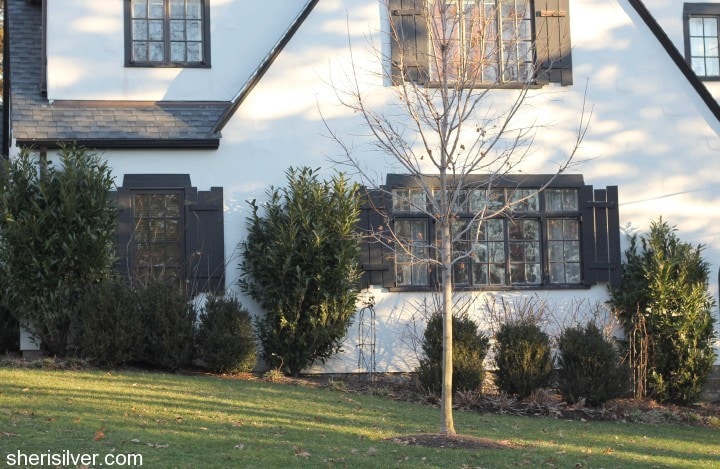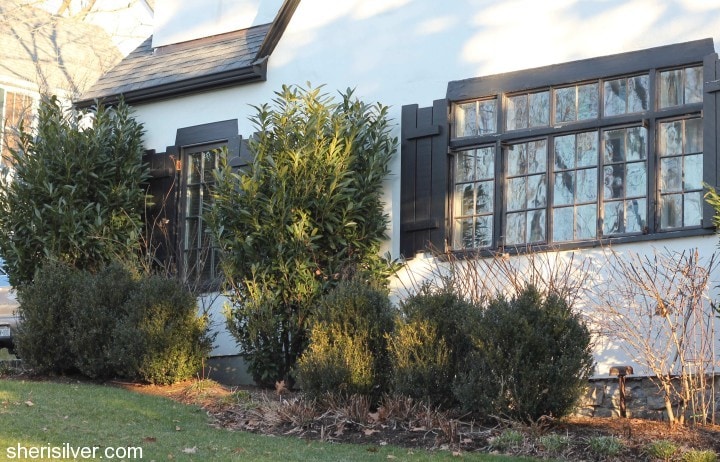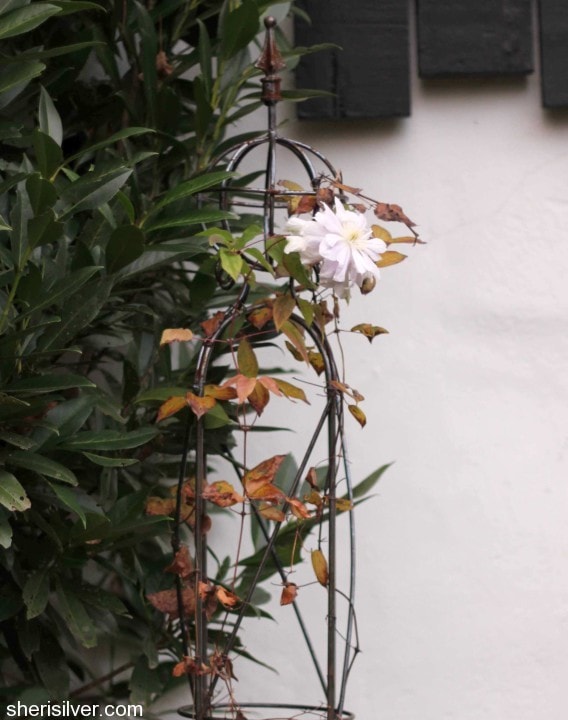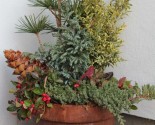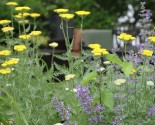My garden makes me happy every day, and in all seasons. But I’m most proud of my garden in January:
I know – you’re probably thinking, really Sheri? No flowers, bare branches – yeah, awesome garden!
But I really appreciate a garden that reflects thoughtfulness during these winter months. I like that the evergreens and tuteurs take center stage for a while, as the perennials and flowering shrubs have gone dormant. Any garden that is viewed in all seasons should have a plan to ensure winter interest too. I’ve written in a previous post about plants that bloom during the winter months – these are great options to incorporate into your garden if you have the room.
But there are other ways to ensure that – even in January – your garden shines (though in a more quiet and subdued manner). The trick is to re-define “interest” during a time of year when your garden can’t rely on showy blooms and vibrant colors. Beauty in the winter garden is more spare and sculptural, utilizing form, shape and texture to catch the eye.
Evergreen shrubs are the obvious choice for winter interest – while providing a neutral backdrop for much of the year, they are essential during the winter for keeping the garden green and lush, amid the dreary grays and browns in the January landscape. I call them the “bones” of the garden, and you can read more about the importance of evergreens – as well as my two favorites – in my posts about my May and December gardens.
Think “outside the bloom”. Look for plants that boast other interesting features – especially those you’ll notice during the winter. For example, trees and shrubs with distinctive bark are great assets in the winter garden. Red and Yellow-twig dogwoods (Cornus alba or sericea) boast bright red or yellow branches that you only really notice once the garden has gone dormant. A cluster of these shrubs set against a snowy backdrop is striking. Oakleaf hydrangea (Hydrangea quercifolia) is a gorgeous shrub that develops an exfoliating bark, offering great textural appeal. Paper birch (Betula papyrifera) and Paperbark maple (Acer griseum) are just two examples of trees that also exhibit peeling bark – these look stunning in a winter landscape.
Ornamental grasses are invaluable in the garden, especially in winter. Like shrubs, they provide structure and scale, but also contribute sound and movement – enhancing the sensory experience of being in your garden. In winter, when other plants have died back or shed their leaves, perennial grasses remain full and upright, often fading to muted shades of buff and tan – they are especially beautiful after a snowfall. With a range of heights from 6” to over 6’, they can be successfully integrated into almost any size garden. Two of my favorite grasses are Switch grass (Panicum virgatum) and Japanese forest grass (Hakonechloa).
The seed heads of many shrubs and perennials – such as coneflowers, astilbes and hydrangeas – can be left up over the winter, contributing shape and texture. Many of these plants offer the additional bonus of providing a food source for birds during these lean months.
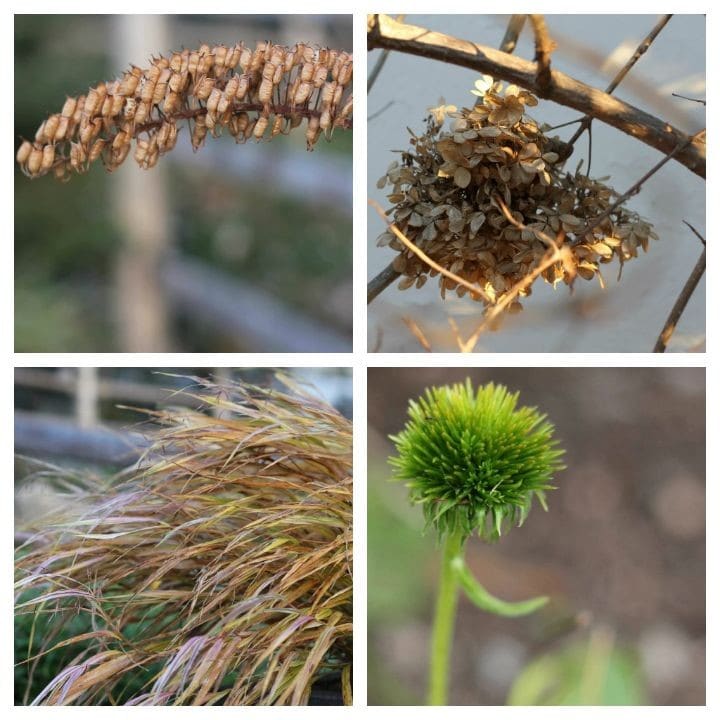 And this is also the time of year when ornamental structures like lattices and tuteurs stand out and provide visual interest and texture.
And this is also the time of year when ornamental structures like lattices and tuteurs stand out and provide visual interest and texture.
So go outside and take a look at your garden, as well as others in your neighborhood. Bundle up and visit public gardens such as the New York Botanical Garden or The High Line, where the more quiet and subdued aesthetic of the winter landscape is executed with the same attention to detail as the rest of the year.
What do you think? Do you find beauty in the winter landscape?

Hi! I'm Sheri!
Welcome to my little corner of the web where you’ll find easy, delicious recipes, the best kitchen hacks and simple tips for turning your home into a clean haven that is free of toxins. So glad you’re here!

